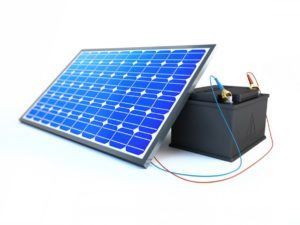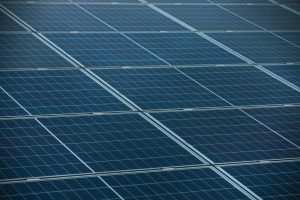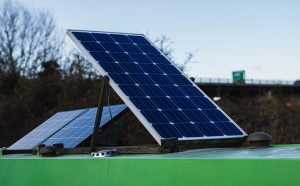
Home solar storage closer to reality
SMA Solar, the world’s largest supplier of solar inverters recently announced the launch of a battery set which will allow solar households to store surplus energy.

SMA Solar, the world’s largest supplier of solar inverters recently announced the launch of a battery set which will allow solar households to store surplus energy.

The Townsville RSL stadium recently flicked the switch on a 348kW rooftop solar installation, becoming the largest installation of its type in Northern Queensland.

Latest data from the Clean Energy Council indicates that residents of Queensland have spent approximately $1.45 billion on solar power systems since March 2011, which represents the equivalent of $2 million a day.

Latest figures show that a record 13.14 per cent of Australia’s electricity was from renewable energy in 2012.

After a mid-year budget revenue hit due to a struggling coal sector in the state, there has been pressure to sell off state electrical assets.

At today’s Council of Australian Government meeting state leaders have agreed to support the plan to reduce Australian’s electricity bills.

Solar installations are set to rise in Queensland following announcement that the state’s electricity prices will increase by 21.4 per cent in 2013/14.

The Tasmanian Government is set to maintain the existing feed in tariff levels for users who feed solar energy back into the grid.

Energy Australia has said that the CFMEU bid to control operating decisions of the Yallourn power station would add to production costs that would ultimately be passed on to Australian consumers through higher electricity prices.

At an address to the National Press Club, Kevin Rudd has put electricity prices at the top of a seven-part national competitiveness agenda.

Australia could phase out coal by 2040 if it doubled the take-up of solar energy and wind energy maintained its current growth pace, according to Professor Ken Baldwin, director of ANU’s Energy Change Institute.

Despite cuts in feed-in tariffs from several years ago, solar panels are now making even more economic sense for Australians. Benefits previously gained are now being equally matched because of rising electricity costs and the plummeting cost of solar panels.

The Labor Government has decided to drop the fixed price carbon tax, switching to an emissions trading scheme from 2014, a year earlier than planned.

The Gillard Government has rejected a change to the renewable energy target after calls from the country’s largest power companies to cut it back.

Australian’s emissions of carbon dioxide from power generation decreased 7 per cent in the financial year ending June 30 according to the latest report by Pitt & Sherry energy consultancy.
FREE 2025 SOLAR & BATTERY BUYER’S GUIDE
from installers in your local area!